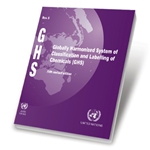Future-Proofing the Metalworking Industry
Sonjay Tools is held in the highest regard as one of the best metalworking distribution companies in India – as such they hold a level of responsibility when it comes to representing their Nation’s aptitude within the metalworking industry overall. Within recent years, one particular facet of this representation comes from the Green India Mission, an initiative launched in Feburary 2014 designed to combat the adverse impact of climate change and to support the India’s Ecological sustainability. In recent times, this has come under the umbrella of the National Action Plan on Climate Change (NAPCC) – which involves a large collection of preventative and adaptive measures which all play into the greater role of climate change-related objectives.
With that focus in mind, minimizing toxic byproducts and environmental impact within the Metalworking Industry is of key priority. There are metalworking fluid producers within India which may offer attractively low prices, but most of which won’t have products that meet national or global regulations for environmental toxicity and hazardous ingredients like Boron, formaldehyde, and short/medium-chain chlorinated paraffins. The latter of these are particularly dangerous, and may result in an increased risk of cancer if inhaled or ingested into the body.
With this in mind, it’s important to prioritize the importation of metalworking products which are in-shape with modern regulatory oversight and India’s own push towards a more stable environmental standard. In most cases, businesses are put into a compromise between the efficiency of their work environment and production output, versus environmental stability and regulatory focus. Hangsterfers Laboratory’s business relationship with Sonjay Tools has helped to bridge the divide with metalworking fluids that don’t compromise on quality or production quantity, and are absent of the hazardous ingredients which often permeate the industry.

In such a highly competitive industry, it isn’t uncommon for some businesses to cut corners on regulatory bodies so that production and sales don’t need to be compromised or slowed by additional bureaucracy. However, the ever-looming threat of industry-induced climate change is further reinforcing the need for the observation and identification of potentially hazardous substances.
A key example of this would be the European Union’s Registration, Evaluation, Authorization and restriction of CHemicals (REACH), which has been enforced on imports to the EU since 2007. REACH itself is only one component of the multi-faceted burocracy surrounding importation in the past few decades – Directive 2002/95/EC ( Restriction of Hazardous Substances | ROHS) and Substances of Very High Concern (SVHC) further reinforce the tide of increasing regulation. Since then, other industrialized nations have been taking similar steps towards formalizing regulatory practices for global markets within the metalworking industry and beyond.

Hangsterfers Laboratories seeks to set a global example for the Metalworking Industry by staying a step ahead of regulatory bureaucracy – minimizing toxicity and hazardous byproducts within the manufacturing and distribution process by all means available. Helping to standardize the use of minimally hazardous metalworking products helps to ensure a cleaner, greener future both for India’s own environmental initiatives, and the world as a whole – As the turn of the decade brings further evidence for the need of these positives changes in the industry.

 Click here to view OSHA’s Purple Book
Click here to view OSHA’s Purple Book